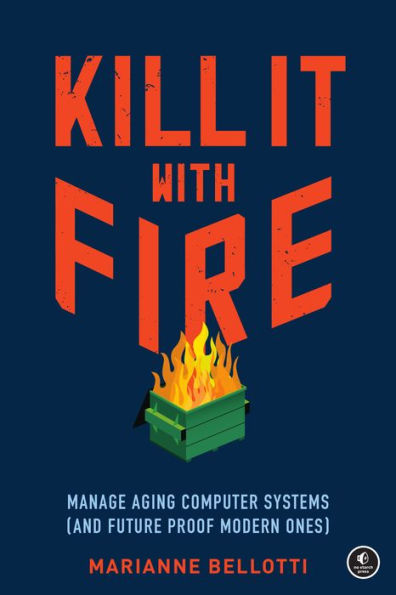Table of Contents
Introduction xv
1 Time Is a Flat Circle 1
Leveraging What Came Before 3
The User as the Market Co-Creator 8
The Mainframe and the Cloud 9
The Hat-Rate Internet 11
Migrating for Value, Not for Trends 14
2 Cannibal Code 17
Alignable Differences and User Interfaces 18
Unix Eats the World 21
Inheritance Paths 27
Leveraging Interfaces When Approaching Legacy Systems 32
Beware Artificial Consistency 35
3 Evaluating Your Architecture 37
Problem 1: Technical Debt 38
Example: The General Ledger 40
Problem 2: Performance Issues 42
Example: Case Flow Management 44
Problem 3: Stability Issues 45
Example: Custom Configuration 49
Stages of a Modernization Plan 51
No Silver Bullets 53
Full Rewrite 54
Iteration in Place 55
Split in Place 56
Blue-Green 56
The Hard Cutoff 57
Putting It Together 57
4 Why Is It Hard? 59
The Curse of Hindsight 60
Easy and Also Impossible 63
Overgrowth: The Application and Its Dependencies 64
Shifting Vertically: Moving from One Abstraction Layer to Another 66
Shifting Horizontally: Moving from One Application to Another 67
Shifting from Client to Server 67
Shifting Down the Dependency Tree 68
Cutting Back the Overgrowth 68
Automation and Conversion 69
Transpiling Code 69
Static Analysis 71
A Guide to Not Making Things Harder 72
5 Building and Protecting Momentum 75
Momentum Builder: The Bliss of Measurable Problems 76
Anatomy of the Measurable Problem 78
Momentum Killer: The Team Cannot Agree 80
Step 1 Define a Scope 81
Step 2 Check for Conflicting Optimization Strategies 83
Step 3 Perform Time-Boxed Experiments 83
Momentum Killer: A History of Failure 84
Momentum Builder: Inspiring Urgency 87
Protecting Momentum: A Quota on Big Decisions 89
Protecting Momentum: Calculating Opportunity Costs 90
The Cost of Not Adding New Features 93
The Cost of Not Fixing Something Else 94
The Cost of Not Deprecating in Favor of a Different Solution 95
6 Coming in Midstream 97
Finding the Bleed 98
Mess: Fixing Things That Are Not Broken 101
Figuring Out Whether Something Needs to Be Fixed 105
But … What About Conventions? 106
When Does Breaking Up Add Value? 107
The Compounding Problem: Diminishing Trust 108
Solution: Formal Methods 109
Mess: Forgotten and Lost Systems 111
The Compounding Problem: Crippling Risk Avoidance 112
Solution: Chaos Testing 112
Mess: Institutional Failures 114
The Compounding Problem: No Owners 115
Solution: Code Yellow 116
Calling a Code Yellow 120
Running a Code Yellow 121
Mess: Leadership Has Lost the Room 122
The Compounding Problem: Self-Sabotaging Teams 125
Solution: Murder Boards 125
Stopping the Bleed 127
7 Design as Destiny 129
Designing Technical Conversations 131
How to Run a Design Exercise 132
More About Follow-ups: Why vs. How 134
Some Useful Design Exercises for Engineering Teams 134
Exercise: Critical Factors 135
Exercise: The Saboteur 135
Exercise: Shared Uncertainties 136
Exercise: The 15 Percent 137
Exercises Specifically for Decisions 138
Exercise: Probabilistic Outcome-Based Decision Making 138
Exercise: Affinity Mapping 139
Team Structure, Organization Structure, and Incentives 140
Individual Incentives 142
Minor Adjustments as Uncertainty 145
Organization Size and Communication 147
Manager Incentives 148
Designing a Team: Applications of Conway's Law 149
Reorgs Are Traumatic 151
Finding the Right Leadership 152
Exercise: The Smallest Testable Unit 153
Structuring the Team to Account for Past Failure 155
Exercise: In-Group/Out-Group 158
Takeaways 159
8 Breaking Changes 161
Being Seen 162
Who Draws the Line? 167
Building Trust Through Failure 168
Breaking Change vs. Breaking 170
Why Break Things on Purpose? 171
Projecting Impact 172
The Kill Switch 177
Communicating Failure 178
Failure Is a Best Practice 179
9 How to Finish 181
Revealing Assumptions 182
Approach 1: Success Criteria 182
Example: Adding Continuous Integration/Continuous Deploy 183
Approach 2: Diagnosis-Policy-Actions 184
Example: Upgrading a Database 184
Comparison 185
Marking Time 186
Postmortems on Success 187
Postmortem vs. Retrospective 188
Running Postmortems 188
The Tale of Two War Rooms 190
Working Groups vs. Committees 191
Success Is Not Obvious If Undefined 194
10 Future-Proofing 195
Time 196
Unescapable Migrations 199
Failing Gracefully 200
Less Time Between Upgrades, Not More 202
A Word of Caution About Automation 206
Building Something Wrong the Correct Way 207
Feedback Loops 210
Don't Stop the Bus 214
Conclusion 217
Index 223



